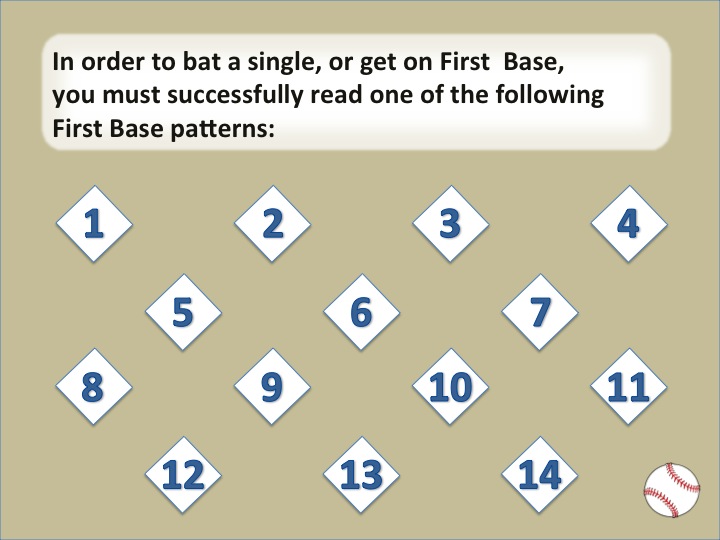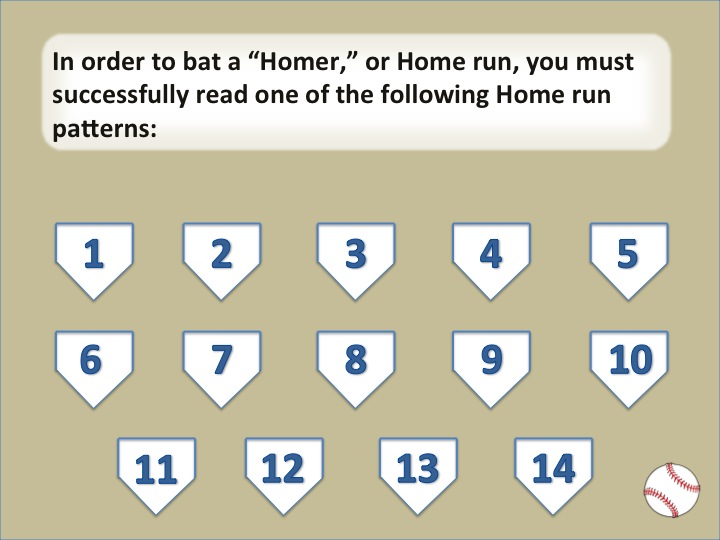I love baseball. Wait, I love the atmosphere of baseball. The game itself is pretty slow. . . although I love the strategy behind it. But for me, when I think about baseball, I think of all the stories that I was told about my Gramps who played for the Louisville Miners. I think of going to the opening home-day game of the Colorado Rockies with my dad and brother (just over 20 years ago in the OLD Mile High Stadium). I think of taking my son, when he was 10 months old, to his first baseball game at Wrigley field. But mainly, I think of an entire crowd of strangers getting up and singing "Take Me Out to the Ballgame" together at the 7th inning stretch. Really, any sport that stands up and sings in the middle of the game is A-OK for me!
There's a few way's that I've played music baseball over the years but I've never been truly happy with it until now. I feel like this past year I've really been able to focus on differentiation and challenging my students individually and this game provides a lot of opportunities for that.
•Students can work as one team and have individual “at-bats” or they can be divided into teams and go to bat together as a team (You can buy real bases in the Dollar tree or borrow your pe teachers bases, they can select team players to be the “runners” and stand on the bases) You can also keep tally of points.
•Teams or individuals can choose which type of “hit” they want to go for: a single (first base), double (second base), triple (third base) or home run.
•Simply click on the desired “hit”.
•From there you can go sequentially through the order of bases on that slide. If you get through all 14 selections, simply start over. It’s good practice either way.
•Once the pitch is shown, the player gets three chances to get it right. If after three chances the player or team does not perform the pattern correctly they have “struck out.”
•You can keep track of outs or you can take turns with both teams being up to bat at the same time (this way will help the engagement level of both teams be higher than if they take turns for the whole team to bat and get three outs.)
As you go along, the patterns get longer/harder:
Now, here's the part of the game that really is open to differentiation. You have pitching and batting cards that you print out and use instead of the PowerPoint. This really opens the game up to MANY possibilities:
1.The easiest way is for the teacher to “pitch”. That is, the teacher reads a pitch card and the team must find the corresponding or matching batting card from the cards.
2.The next level of difficulty is for one team to pitch (that is, they all read the pitching card together) and the other team find the batting card that matches.
3.The next level of difficulty is to have one team pitch ( as in #2) and the team use staff or rhythm cards to derive the pattern on the staff or on beat strips. The use of these strips really aides those kiddos that are visual and kinesthetic learners.
4.The next level, the same as #3, but the pitcher and batter work as individuals instead of as a team.
5.Next, one team pitch (as in #2) but only clapping the rhythm or singing the melody on a neutral syllable. The other team aurally derives and performs the pattern back on rhythm syllables or solfége.
6.Finally, an individual performs the pitching card (as in #5) and an individual derives and performs the pattern back on rhythm syllables or solfége.
Here's an example of a triple pitching cards (two cards are printed on a page):
And the matching batting cards: (these are written out in F-do and G-do)
And here's a home run pitching cards:
And the matching batting cards.I labeled this as "Game 1" so when I go to use it with my 2nd graders in the fall they won't think it's a first grade game, although it will be reviewing my first grade concepts.
I can also use the cards as flashcards!
*** Coming soon:
Music Baseball, level 2 (contains concepts above plus halfnote, tika-tika, do & re)
Music Baseball, level 3 (contains concepts above plus ti-tika/ti-tiri, tika-ti/tiri-ti, low la & low so)
Music Baseball, level 4 (contains concepts above plus syncopa (ti-ta-ti), tom-ti (dotted quarter-eighth), high do & fa)
Music Baseball, level 5 (contains above plus tom-ti, tim-ka & ti)
Music Baseball, level 2 (contains concepts above plus halfnote, tika-tika, do & re)
Music Baseball, level 3 (contains concepts above plus ti-tika/ti-tiri, tika-ti/tiri-ti, low la & low so)
Music Baseball, level 4 (contains concepts above plus syncopa (ti-ta-ti), tom-ti (dotted quarter-eighth), high do & fa)
Music Baseball, level 5 (contains above plus tom-ti, tim-ka & ti)
I'm hoping to start posting more songs and ideas to use that aren't posted or linked to my Teachers Pay Teachers store!!! But speaking of that, next week on May 7 & 8 there will be a BIG sale on TpT!!! I'll give you more details about that this weekend!
If you're in CO, aren't you tired of the snow?!! If you're not in CO, PLEASE send us wishes for spring weather!!! I'm tired of the snow, lol!!!
Happy Wednesday!















No comments
Post a Comment